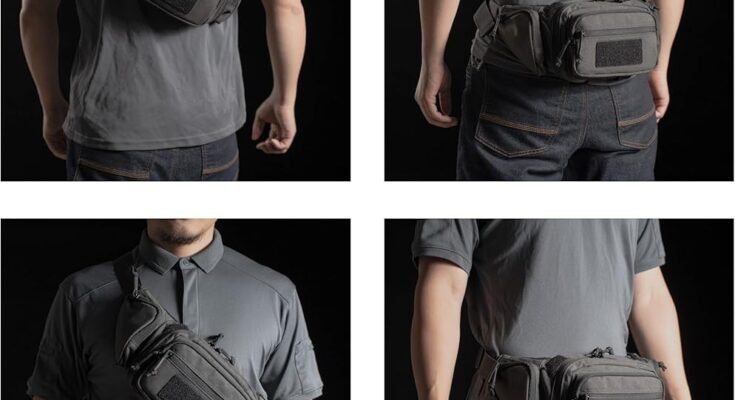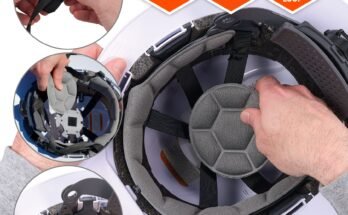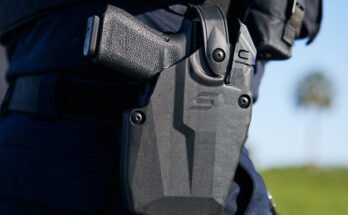If you hike with a sidearm, your holster matters as much as your boots. I’ve tested chest rigs, belt holsters, and pack-mounted setups on long, wet, and steep trails. Here’s the bottom line: the best holster for hiking or outdoor use is the one that keeps the gun secure, accessible, and comfortable with a backpack on. In most backcountry cases, a chest holster is the most practical choice, but there are great options for different terrain, weather, and carry needs. This guide breaks it down so you can pick with confidence.
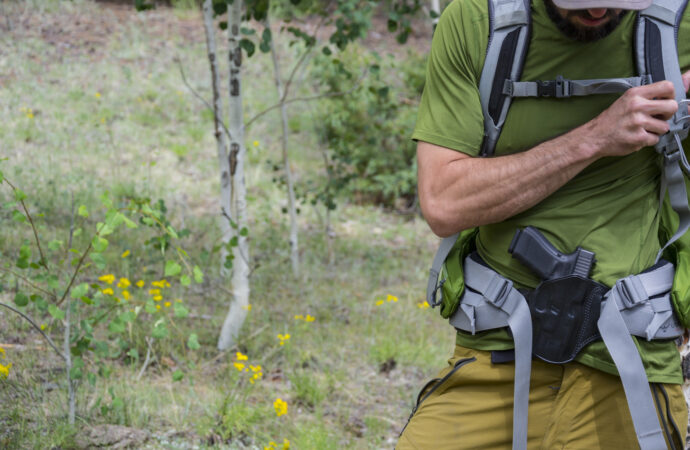
Key Factors That Decide The Best Hiking Holster
Choosing a holster for the trail is different than choosing one for town. Your pack’s waist belt, steep climbs, and rain all change the game. Focus on fit, retention, and access with a loaded pack.
- Retention and security: Look for solid friction fit or Level 2 retention. You should be able to jog, scramble, and crouch without worry.
- Access with a backpack: Your pack’s hip belt can block waistband holsters. Test the draw while wearing your pack.
- Comfort and hot spots: Breathable backers, smooth edges, and stable mounting prevent rub and pressure points.
- Weather and durability: Kydex and coated nylon handle sweat and rain well. Leather needs more care in wet conditions.
- Compatibility: Confirm your holster works with your optic, light, or bear spray placement.
Field note: On a wet, 10-mile ridge hike, my old leather holster soaked up water and sagged. A Kydex chest rig solved it on the next trip.

Holster Types For Hiking: Pros And Cons
Different trails and threats call for different carry methods. Here is what actually works outside.
- Chest holster: Rides high on the sternum. Clear of the hip belt. Great access while seated, climbing, or wearing a rain shell. Best for backcountry, fishing waders, and snow.
- Belt holster (strong-side or appendix): Simple and familiar. Works on short hikes with light packs or no hip belt. Can be blocked by the pack waist strap.
- Drop or thigh holster: Sits below the belt line. Clears the hip belt. Stable, but may snag brush and add swing on uneven ground.
- Pack-mounted holster: Attaches to shoulder strap or hip belt. Clean integration. Access depends on pack design. Removing the pack can remove the gun.
- Pocket or fanny pack: Discreet and fast for small frames. Good for trail runs. Not ideal for larger pistols or rapid reholstering under stress.
- Shoulder holster: Conceals under a jacket. Works in cold weather. Slower access with layers and can shift if not adjusted.
My pick for most hikers: a chest holster with adjustable harness and a mold-fit shell.
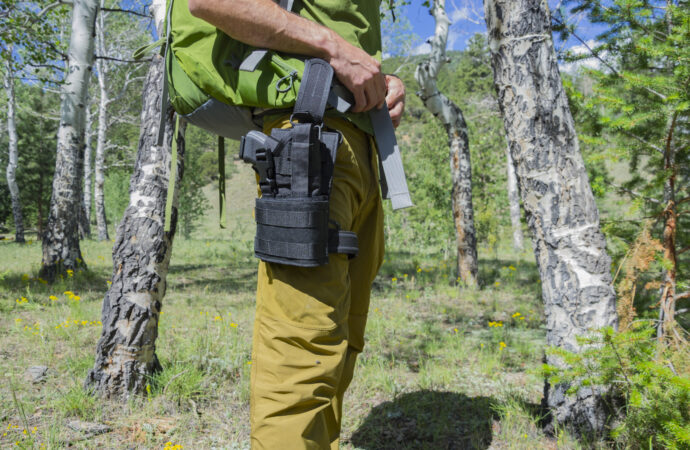
Carry Positions That Work With A Backpack
Your pack’s hip belt and sternum strap drive your choice. Test draw strokes while loaded.
- Chest carry: Fast draw without touching the pack. Works when sitting, crossing water, or bushwhacking.
- High-ride strong-side: Clears some hip belts. Choose a rigid mount and slight cant to avoid digging into ribs.
- Drop leg: Use a single low drop and tight thigh strap to cut bounce. Good with heavy winter layers.
- Shoulder strap mount: Keep the muzzle safe and away from the face. Ensure the trigger guard is fully covered.
Tip: Practice safe draws with an empty gun at home while wearing your pack. Fix snags now, not on the trail.

Materials And Retention: What Survives The Trail
Outdoor holsters must shrug off dirt, sweat, rain, and falls. Retention must be positive and repeatable.
- Kydex or polymer: Rigid, weatherproof, and easy to clean. Holds shape for safe reholstering.
- Nylon or laminate: Light and comfy. Look for reinforced mouths and real retention devices, not just straps.
- Leather: Classic and comfortable. Needs care in wet conditions. Can soften and loosen retention when soaked.
- Retention levels: Friction retention plus a thumb strap or hood is ideal. You should hear/feel a click on seat, and a positive release on draw.
- Sweat guards and optics cuts: Ensure clearance for red dots, tall sights, and weapon lights without catching.
Field note: Fine dust can act like sandpaper. Rinse gear and wipe rails after gritty trails to extend life.
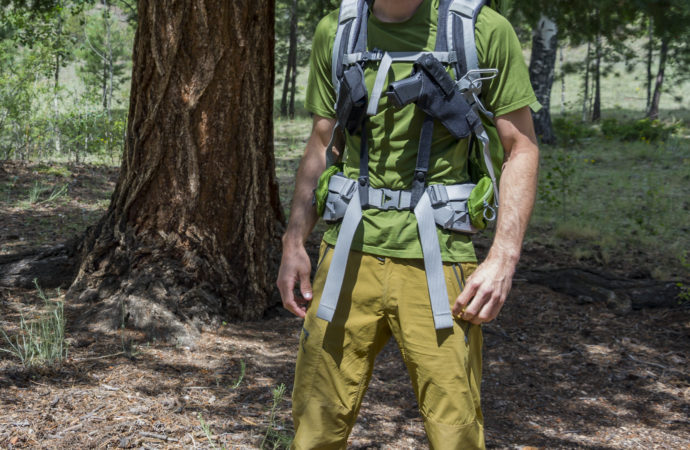
Fit With Clothing, Layers, And Weather
Weather shifts fast in the mountains. Your holster must adapt.
- Hot weather: Breathable backers, spacer mesh, and smooth edges reduce hot spots. Avoid chafe points under pack straps.
- Cold weather: Chest rigs shine over bulky jackets. Practice sweeping away layers with gloves on.
- Rain and snow: Use drainage holes and corrosion-resistant hardware. Add a light retention strap for slick conditions.
Pro tip: Adjust your harness while wearing your thickest layer. Then micro-adjust for warm days.

Safety, Training, And Legal Considerations
Responsible carry comes first, always. Follow local laws and best practices.
- Know the law: Rules change by state, park, and country. Check carry laws and wildlife rules before you go.
- Muzzle discipline: Holster must cover the trigger guard fully. No exceptions.
- Practice: Dry-fire draw practice builds safe, clean reps. Add dummy rounds for reload drills.
- Wildlife context: In bear country, many hikers carry bear spray as primary with a handgun as backup. Place both where you can reach them fast.
- Partner awareness: If hiking with others, ensure your draw stroke stays safe around the group.
Note: Choose ammunition suited for your goal, whether defense against animals or two-legged threats. Train with what you carry.
Maintenance And Field Care
Dirt, sweat, and pine needles will find your holster. Keep it simple.
- After each hike: Wipe down gun and holster. Check screws, straps, and snaps. Add thread locker to mounting screws.
- After rain: Air-dry and oil exposed metal. Avoid heat guns or direct sun baking, which can warp materials.
- Seasonal check: Inspect for cracks, frays, or loose hardware. Replace worn parts early.
Trail trick: Pack a tiny kit with a multi-tool, spare screws, a small strap, and alcohol wipes.
Recommended Use-Cases And Example Setups
Match your carry to your terrain, pack, and pistol size.
- Day hike with a small pack: High-ride strong-side Kydex. Minimal bulk. Easy on-and-off.
- Backpacking with a full hip belt: Chest holster with adjustable harness and Level 2 retention.
- Trail running or fastpacking: Compact belly band or running belt with a small pistol and rigid trigger guard insert.
- Fishing or wading: Chest rig above the waterline. Corrosion-resistant hardware.
- Winter snowshoeing: Chest or shoulder holster over outer layers. Large zipper pulls for fast access.
If you’re unsure, start with a modular chest holster. Add or remove straps and adjust ride height to dial comfort.
How To Size And Test Before You Commit
A few checks prevent buyer’s remorse.
- Fit test: Unload your pistol. Seat it. Shake, squat, and jog. It should not shift or creak.
- Pack test: Wear your full pack. Practice your draw 20 times. Confirm nothing snags.
- Layer test: Try with a base layer, jacket, and rain shell. Check for hot spots.
- Trail shakedown: Do a short local hike. Log rub points and adjust.
If it still rubs after two adjustments, it’s the wrong holster for you.
Frequently Asked Questions Of What Holster Is Best For Hiking Or Outdoor Use?
Is A Chest Holster Better Than A Belt Holster For Hiking?
For most hikers with a real backpack, yes. A chest holster stays clear of the hip belt and gives fast access when seated, crossing streams, or wearing layers.
What Retention Level Do I Need On The Trail?
At least solid friction retention. A Level 2 option like a thumb break or hood is even better for scrambling, running, or bushwhacking.
Can I Mount A Holster To My Backpack Straps?
Yes, many holsters mount to MOLLE or pack straps. Test the draw with the pack on, and be aware that removing your pack removes your gun.
Is Leather A Bad Choice For Wet Hikes?
Not bad, but high-maintenance. Leather can swell and loosen when soaked. Kydex or coated nylon handle rain and sweat with less fuss.
How Do I Carry Bear Spray And A Handgun Together?
Place bear spray on your pack strap or chest for primary use. Put the handgun in a chest holster or strong-side position. Practice accessing both without conflict.
What About Appendix Carry While Hiking?
Appendix can work on short hikes without a pack. A hip belt often blocks the draw and adds pressure. Test carefully if you plan to use it.
Conclusion
The best holster for hiking or outdoor use is the one you can reach fast, that stays put under a pack, and that holds up to weather and miles. For most hikers, a chest holster with solid retention and breathable straps wins. If your hikes are shorter or your pack is light, a strong-side belt holster or a pack-mounted rig can be perfect. Test your setup with your backpack, layers, and real movement before you commit.
Pick a holster that fits your terrain, train your draw safely, and maintain your gear. You will feel more confident on every mile. Ready to dial in your carry? Try a short shakedown hike this week, then share what worked in the comments or subscribe for more trail-ready gear guides.
